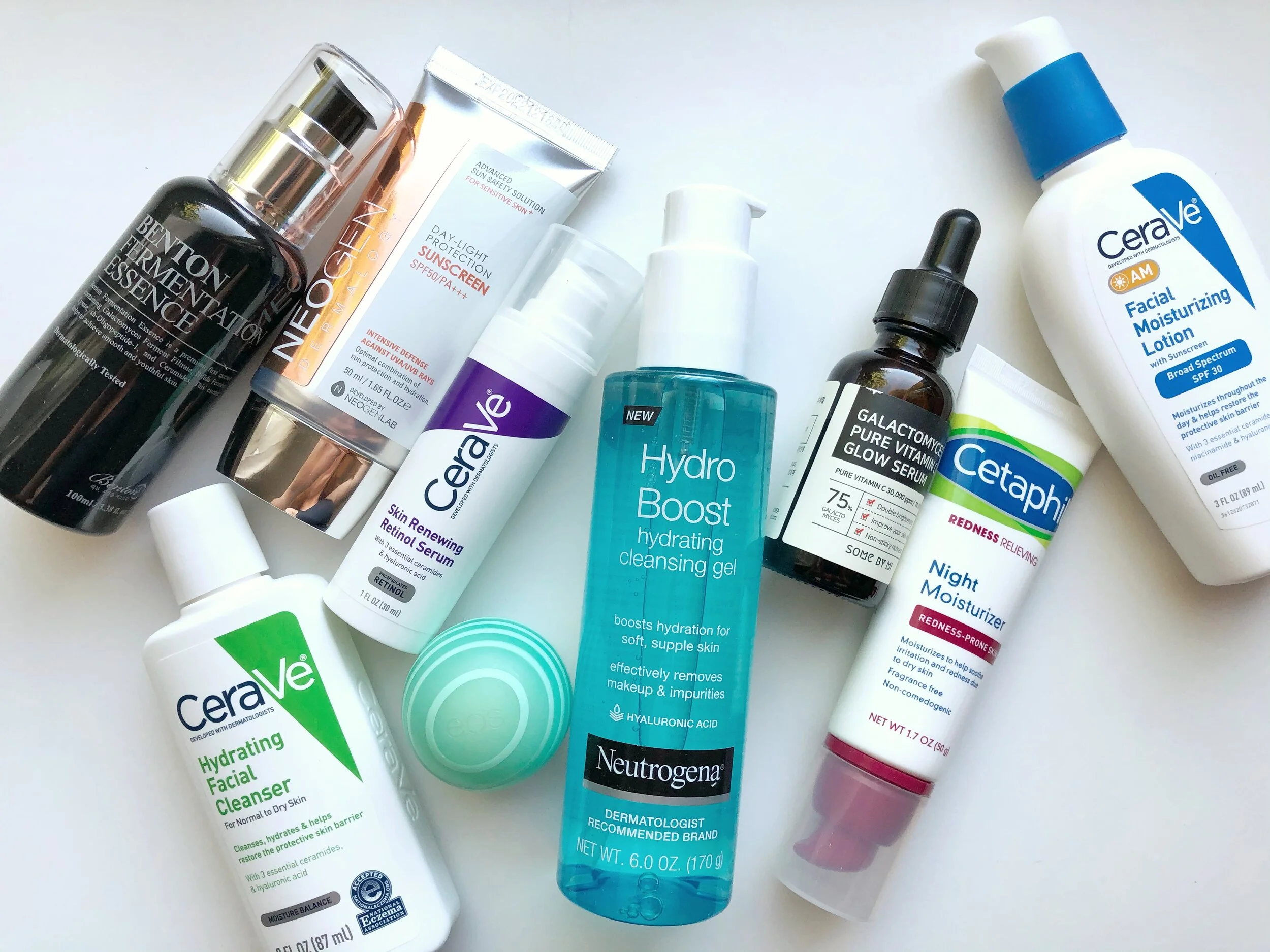How I Trained Myself To Sleep On My Back for Better Skin
I’ve written about the importance of beauty sleep before and I’m an advocate for leaving parties early to get enough shut eye, much to my friends’ dismay. I’m just a happier, more productive person when I’m well-rested. And while I’m proud of my strict 10PM bedtime, I’m even more proud that I successfully trained myself to sleep on my back. Why is that so important? I’m so glad you asked.
Now that I’m entering my mid-20s, it’s important to me to build good habits that keep the signs of aging at bay and training myself to sleep on my back was an important habit to learn. The most obvious reason is you avoid the “sleep lines” and friction that come with pressing your face into your pillow and blankets. While these lines tend to go away by the time you’re finished with your morning coffee, over time they turn into permanent fine lines and wrinkles. This also leads to volume loss and potential asymmetry on the side of your face you usually sleep on. Your neck and chest are prone to creasing caused my your sleep position. You also wake up less puffy when you sleep on your back because gravity won’t allow fluid to pool up on your face.
In addition to the anti-aging benefits, sleeping on your back also helps keep your spine aligned and relieves sinus buildup. Personally, I’ve had deeper sleeps with more vivid dreams since learning to sleep on my back.
But after 23 years of being a stomach and side sleeper, training myself to sleep on my back took some time and a few adjustments to my bedtime routine. Here is what worked for me.
Get The Right Mattress
The moment I switched from a soft mattress to a firm one, sleeping on my back became a lot easier. A soft mattress (the kind that molds to your body) makes your body is work harder all night to stop you from sinking into the bed. You might wake up with soreness or feeling like you didn’t have a good night’s sleep.
If your backbone is out of whack for eight hours a night, it can be hard to function the next day. A firm mattress will help support your back and hips, and will evenly distribute your weight allowing you to sleep with proper posture. Proper posture while you sleep will put less strain on your muscles, increase circulation, and keeps your lower back from collapsing allowing you to take in more oxygen while you snooze. A good rule of thumb for when you’re testing out mattresses is if you slump into it, it’s probably too soft. Your mattress should be firm enough support your body in neutral position, where your spine, butt, heels, shoulders, and head are in proper alignment, but not too firm that it is digging into those pressure points.
If you’re not ready to invest in a new mattress, consider buying a mattress topper. Here’s an affordable option from Amazon.
Elevate Your Head
When I was first training myself to sleep on my back, I experimented with different pillows and positions a lot. What worked best for me was finding a pillow that allowed me to sleep with my head elevated. I suggest getting a pillow that’s malleable so that you can set it the way that feels most comfortable for you.
My favorite is The Endy Pillow ($60) because you can customize the thickness of the pillow to your preference. The key to a restful sleep is keeping the spine and neck in natural alignment, so you want to make sure you’re not propped up too high or too flat but just right. A good pillow will prevent your head from moving from side to side and provide neck support.
Speaking from experience, if you have a bigger booty, place a pillow in the curve where your back meets your butt to help make your body as straight as possible. Some people also find it helpful to keep a pillow under their knees to alleviate some of the pressure from their lower back.
Try a Weighted Blanket
Believe it or not, I once tried sleeping with wrist and ankle weights to help “hold me down” in position, but I do not recommend this. While it is a great short term solution to keep you from tossing and turning, it will have negative affects on your joints in the long run. A weighted blanket is a more elegant version of this. It’s a lot harder to toss and turn under a weighted blanket, which will prevent you from turning on your side or stomach in the middle of the night. I love the the BlanQuil Chill Weighted Blanket ($349), it comes in 15 or 20 pound options and helps to disperse body heat if you’re a sweaty sleeper like me.
Break Bad Sleeping Habits
How you spend your time before bed directly affects the quality of your sleep. If you spend your last waking moments checking stressful emails or rushing to catch a deadline, you’ll probably go to sleep feeling stressed and anxious. In the same way, if you get ready for bed by watching Netflix on your side, your body is already prepped to sleep on its side.
My bedtime routine is sacred to me. Right before bed, I focus on relaxing my body and preparing for sleep. It might sound crazy, but simply switching from watching Netflix on my side to reading a book sitting up helped me break the habit of sleeping on my side.
Be Persistent
While training yourself to sleep on your back, you’ll naturally roll to your preferred sleeping position. Always roll back to your back when you catch yourself sleeping in another position and eventually it will become second nature.
But remember, sleeping on your back isn’t for everyone. If you’ve given it a solid effort and still can’t seem to make it work, sleep in whatever position feels most comfortable for you. At the end of the day, the health benefits of getting enough sleep outweigh the benefits of sleeping in a certain position.
Have you successfully trained yourself to sleep on your back? Add your tips in the comments!








